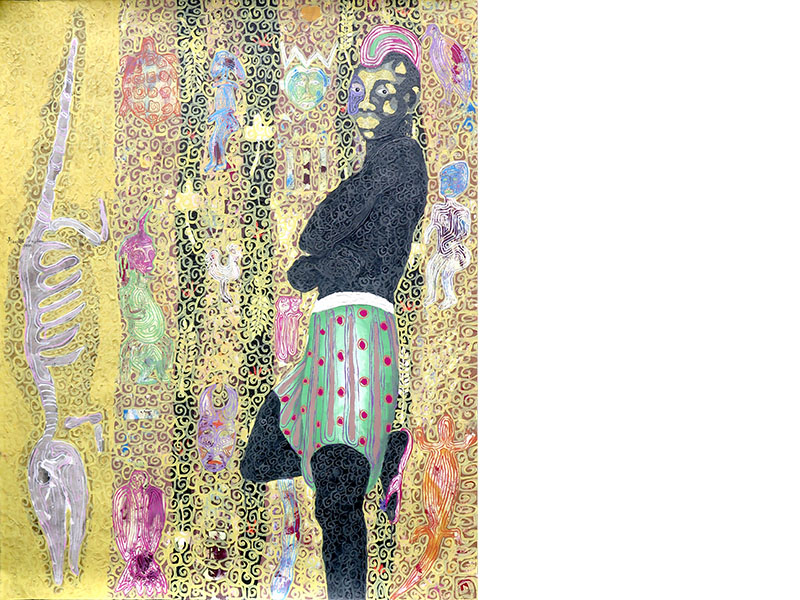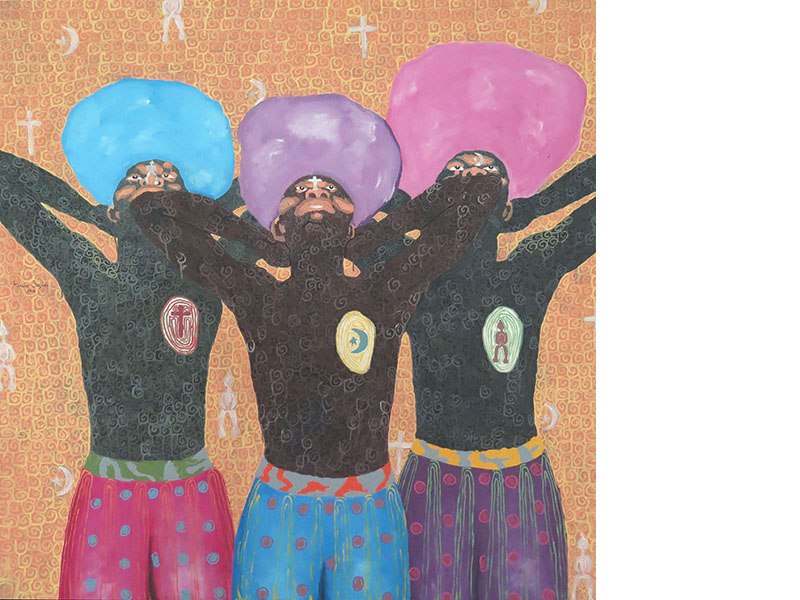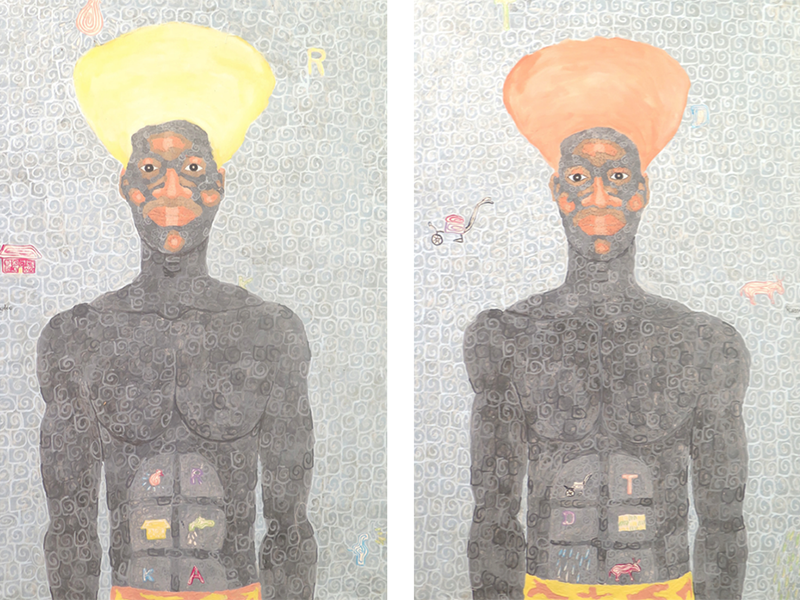
Kassou Seydou
Galerie Cécile Fakhoury is pleased to present Kings of the new cities, the first personal exhibition by the Kassou Seydou in Abidjan.Until September 23, 2017.
About:
A script represented by a line unravels and rearranges under the artist’s brushes. Starting from the observation that all things are scripts and that a script is a distorted line, Kassou Seydou conceptualizes it through a reproduction of constant circular shapes. Poetic and similar to narration, the work of this Senegalese painter unveils his view of an altered and much more complex world. Through perceiving and pointing out its dysfunctions, Kassou Seydou exposes a disordered world using a warm color scheme and lively characters.

The artist consciousness is filled with references, symbols, esoteric signs, animals, spirits and fetishes. Stemming from his early childhood and frequent stays in Casamance, this mystical aspect inspired his reflection and gaze on society. Deeply connected to the land and his origins, Kassou Seydou’s approach puts nature and more specifically agriculture at the heart of a harmonious functioning of society. Source of dissatisfaction, frustration, and conflict, the process of resources depletion and the growing structural inequalities are recurrent observations. To Kassou Seydou’s mind, it is critical to put humans and nature at the core of our concerns, and economy at their service. Caring for the land, sharing, and equity are values he advocates for in each of his pieces.

Through the 13 canvases presented in this exhibition, we are immersed in the artist’s allegorical and expressive world. The tensions and alterations we find in his characters suggest a critique of society, while the attributes, emblems, and representations of various fetishes attest to a strong faith in humanity and its traditions.

The diptych Capitale wallah région (Capitale or region) depicts this duality between urbanity and rurality. We witness the autopsy of two individuals and their preoccupations. In the center of their abdomens, symbols express their priorities. For the rural man, it concerns agricultural machinery, earth, livestock, rain or wintering. For the urban man, it relates to electricity, running water, consumption acts or moments in society such as meals. These symptomatic observations of our contemporary world lead us to ponder; despite sufficient global resources and unprecedented technological achievements, how is it that humanity is failing to provide sustenance, clothing, lodging, medical care and the necessary potentialities for its accomplishment to each individual?
This elementary reflection reverberates through him like an emergency. He observes his environment using a leitmotiv: defining and highlighting the best in all things. Kassou Seydou’s ideology advocates for living in harmony with oneself and our environment, which to him is the only way to achieve harmony with others. Regardless of how diverse our societies, religions, cultures or traditions are, through their actions, humans must tolerate, accept, and benevolently observe this multifarious world. The recurrence of nature’s fertile symbols such as vegetation, religious signs like the cross or the crescent, and animals like the goat or the caiman, takes us back to the importance of the customs forged by humans throughout the centuries and the role of culture in world equilibrium.

A society needs culture to develop and progress. Intrinsically it serves the education of man, the dissemination of knowledge, and nation building. A vital component of a dynamic society, culture is expressed through the way we tell stories, celebrate, reminisce the past, entertain ourselves and envision the future. It is this creative expression that allows humans to define themselves and see the world through the eyes of others that Kassou Seydou presents in this exhibition.
